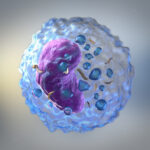According to a story from Healio, a recent study documented the successful use of a miniature three-dimensional heart model, dubbed ‘heart-on-a-chip,’ in the prediction of cardiotoxicity of cancer therapies. The model uses stem cells that have been reprogrammed. The model also ‘matures’ these stem cells, and these mature cells are a more effective representation of heart cells for the purposes of research and testing.
In the study, the research team began by developing the stem cells to use in the model, a process that takes around three weeks. These stem cells were reprogrammed into cells of the blood vessels and the heart muscle itself. These cells are flowed into the chip via two tubes which are crisscrossed in an ‘x’ shape. While on the chip, the cells are stretched back and forth, allowing them to strengthen and mature.
“They’re not perfect replicates of what you would find in adult[s], but just by putting these cells on the chip … [made] the cells more mature and closer to what you would find in the adult human body.” – Arun Sharma, PhD, research scientist, Cedars-Sinai Cancer Center
In order to test the effectiveness of the chip, the researchers tested VEGFR2/PDGFR-inhibiting tyrosine kinase inhibitors (VPTKIs). These are chemotherapy agents that have known cardiotoxic side effects. Both the heart cells and blood vessel cells suffered damage when exposed to the agents.
This method promises advantages over current drug testing methods on culture plates, which typically rely on immature cells. The three-dimensional chip system also allows for the recognition of impacts that can’t be identified on culture plates, such as EKG or beating rates and rhythm.
Another benefit of the heart-on-a-chip system is that it allows multiple types of cells to interact and undergo testing against a drug at the same time:
“We’re showing that there is a difference in the toxicity of that same drug on the two different populations of cells.” – Sharma
The model is showing a lot of promise, but it isn’t quite ready for commercial use. Future research will aim to improve the lifespan of the model and further refinement of the chip.
This study was original published in the journal Lab on a Chip. Check out the abstract here.
Last modified: April 16, 2024










